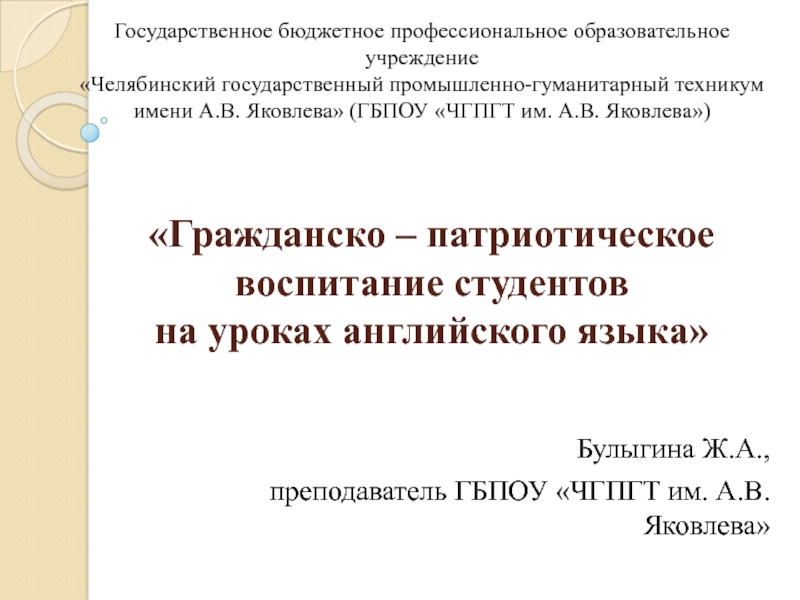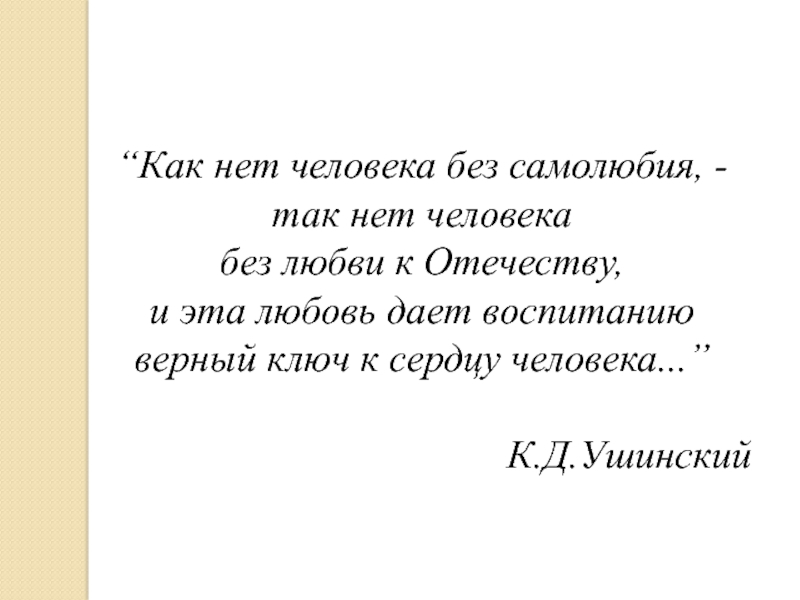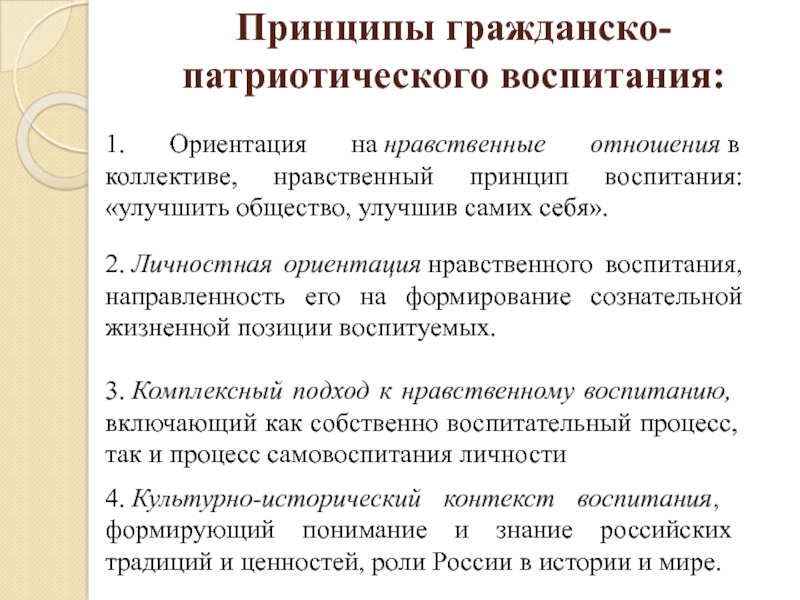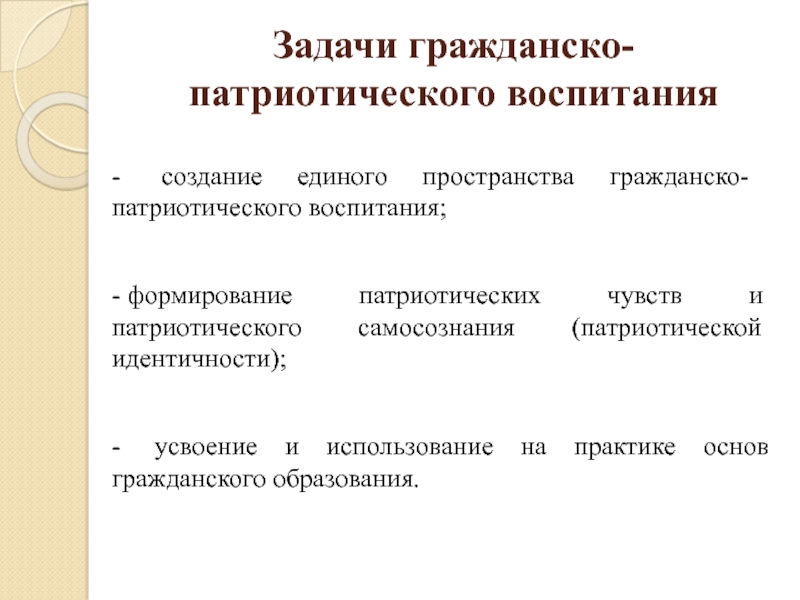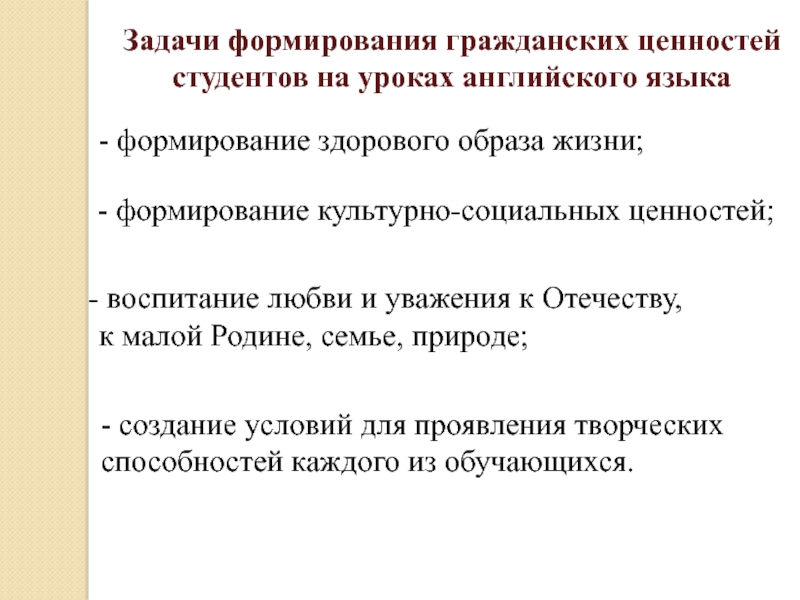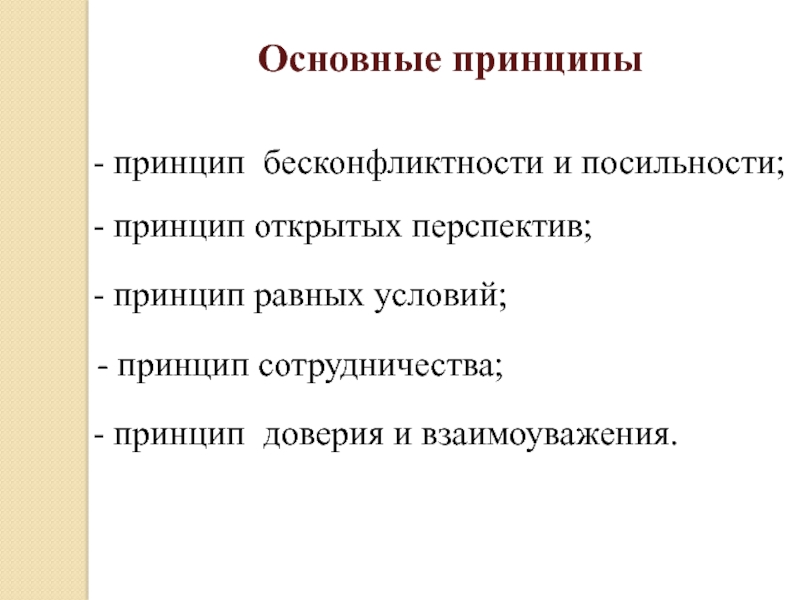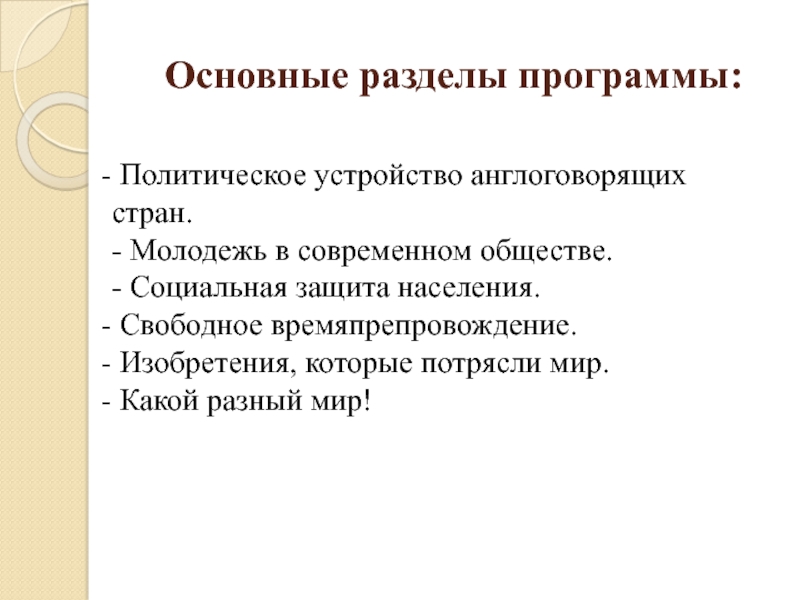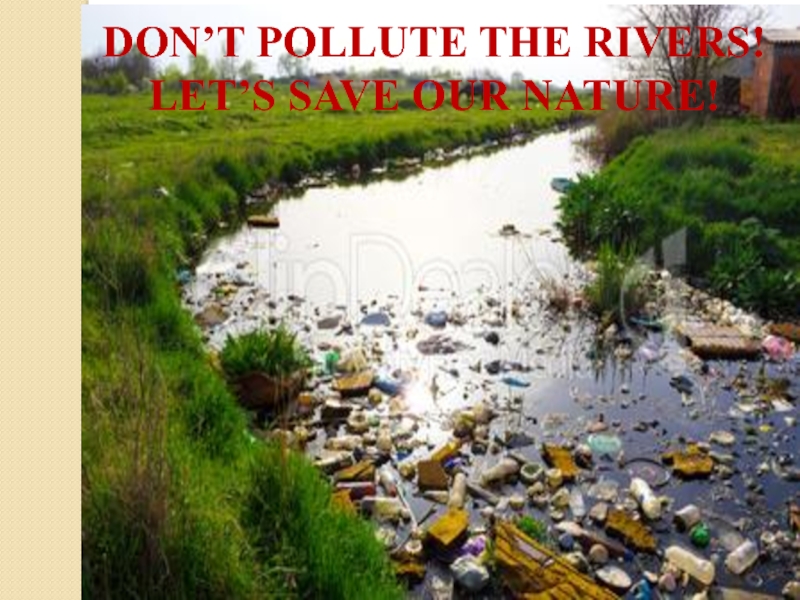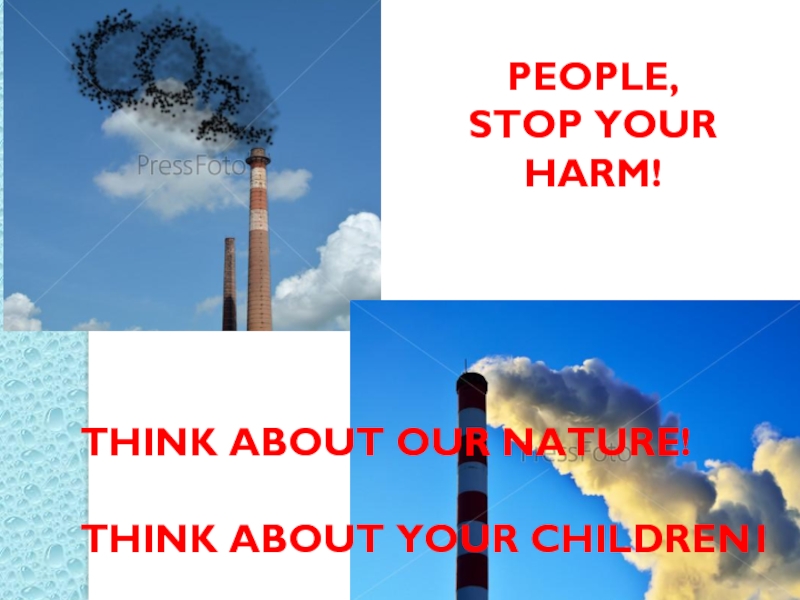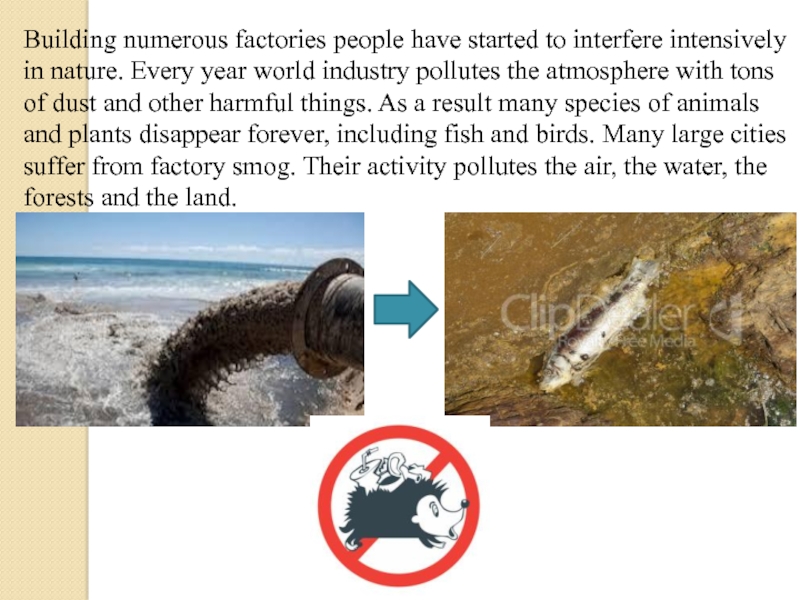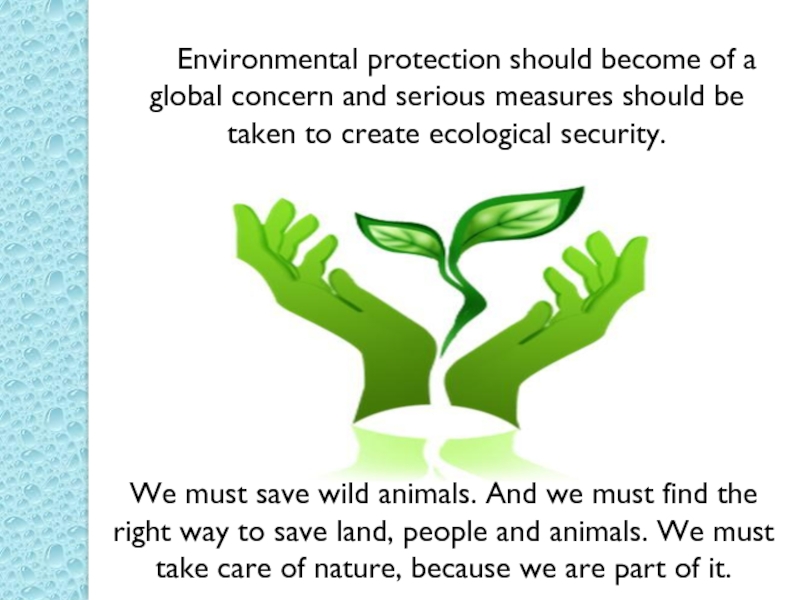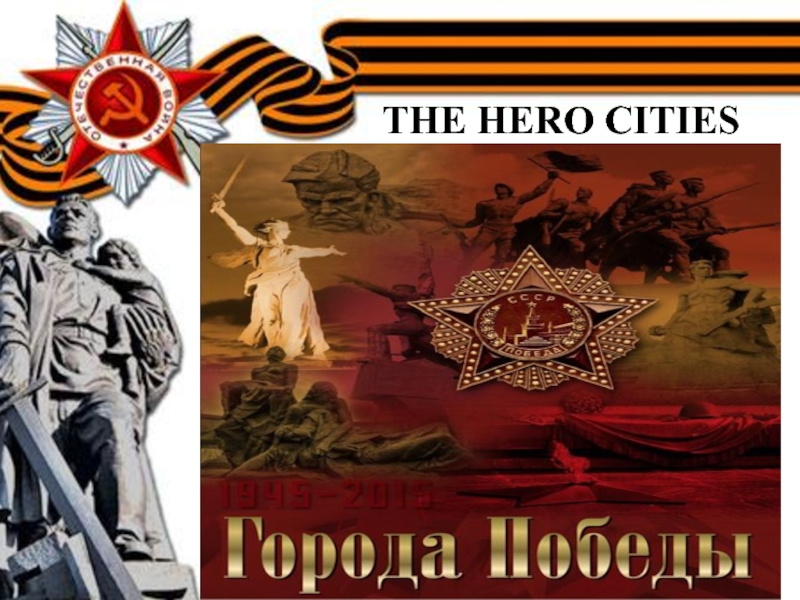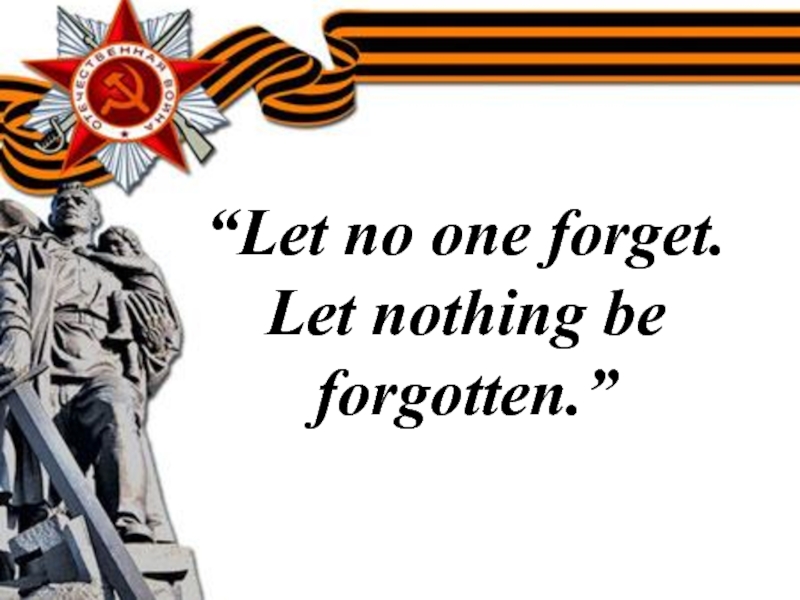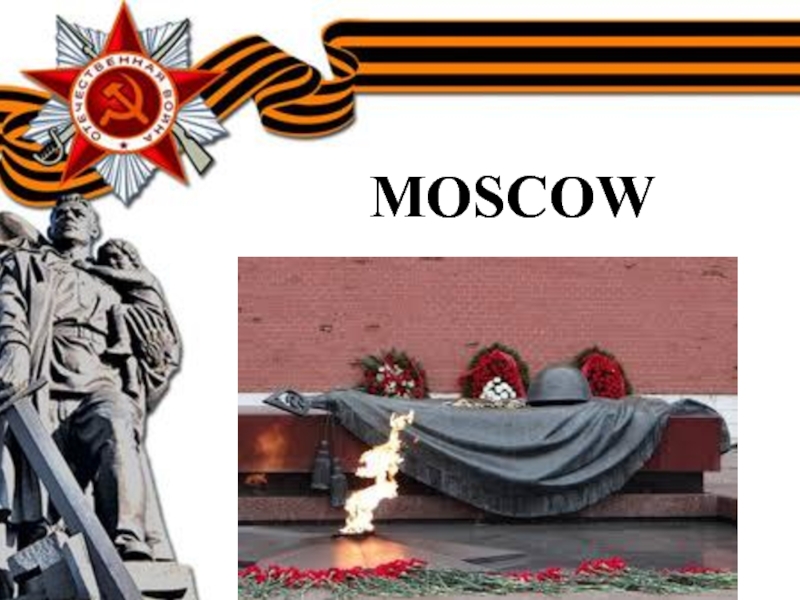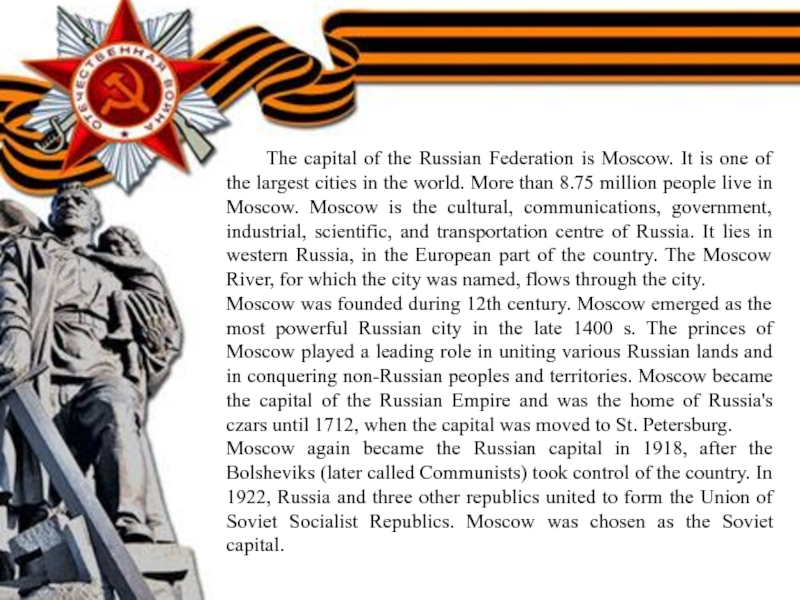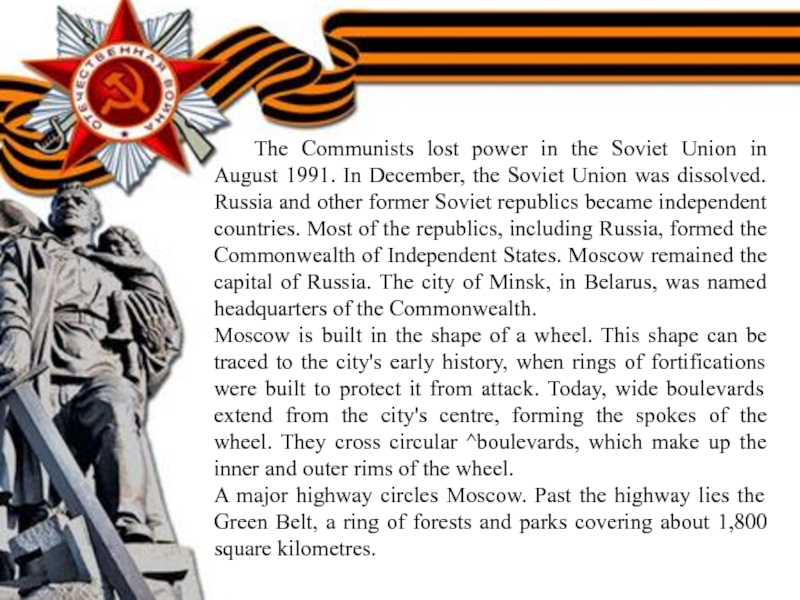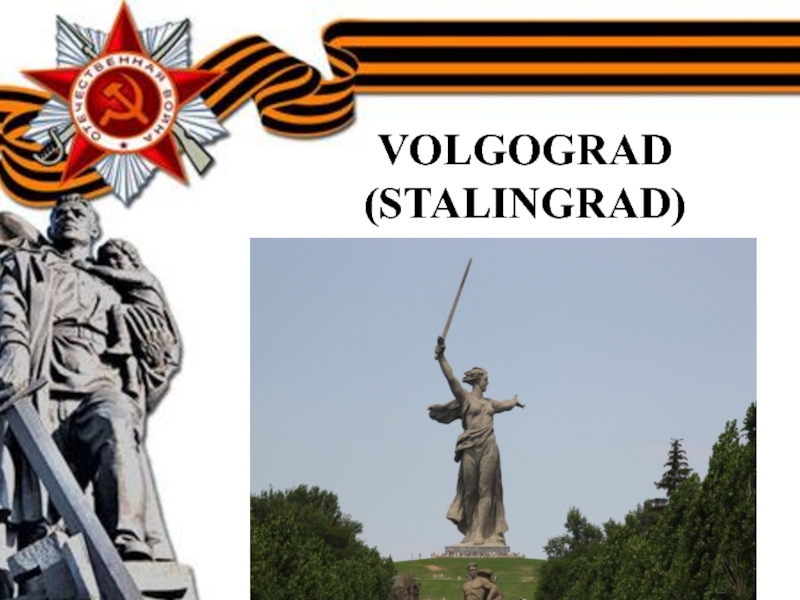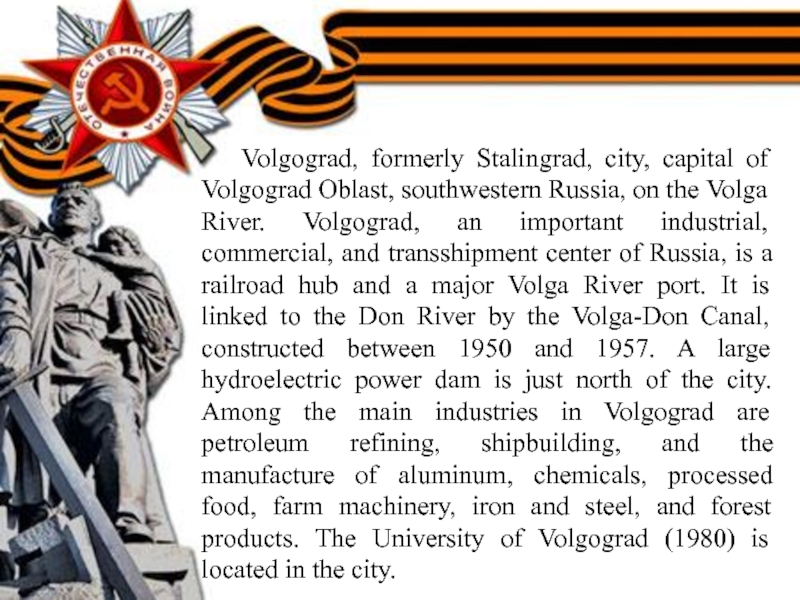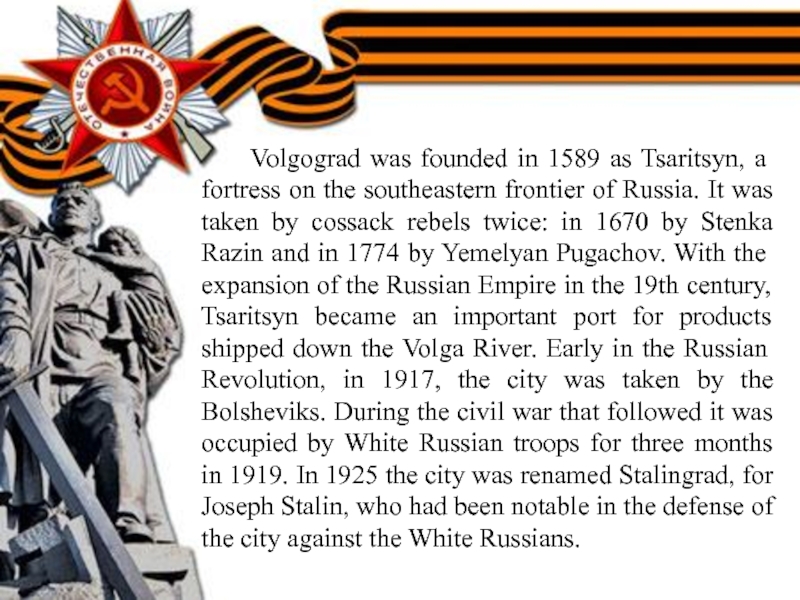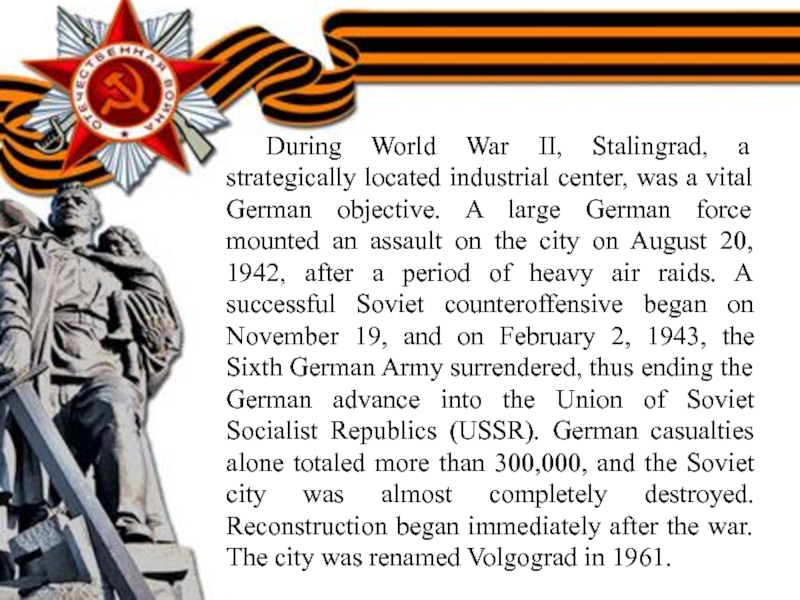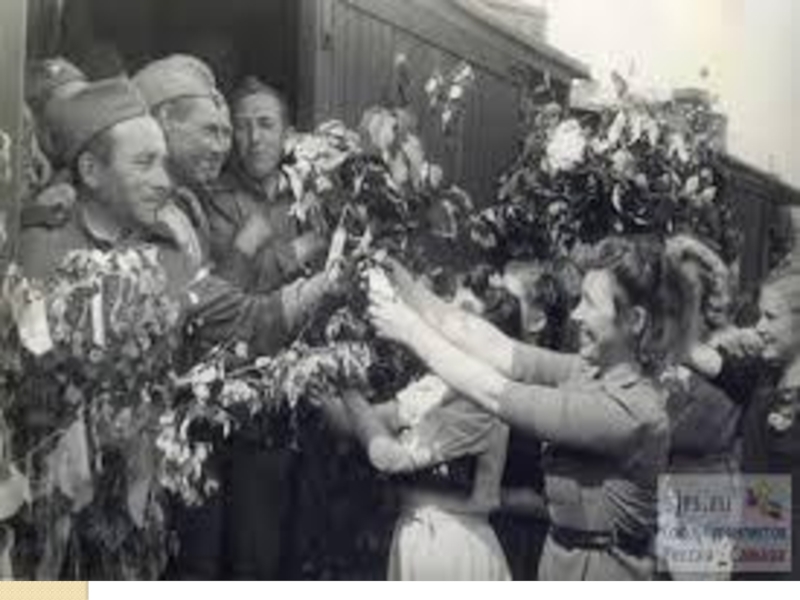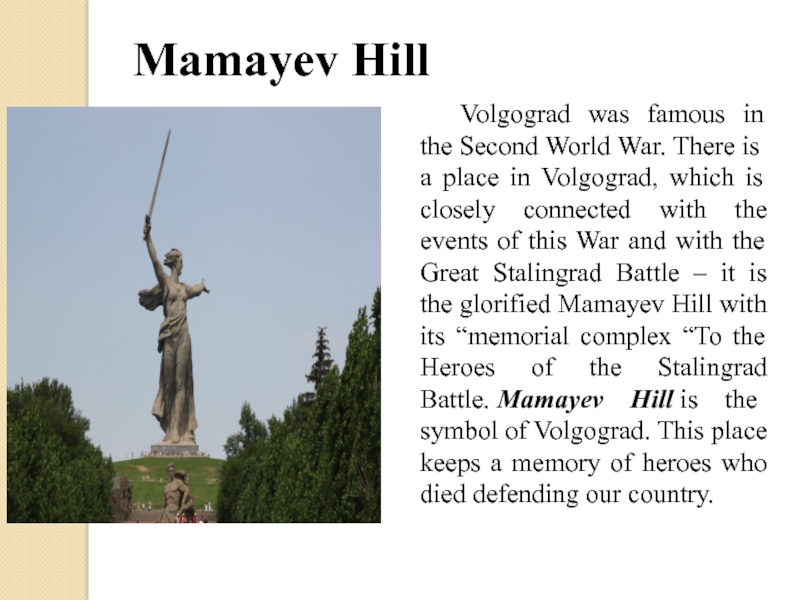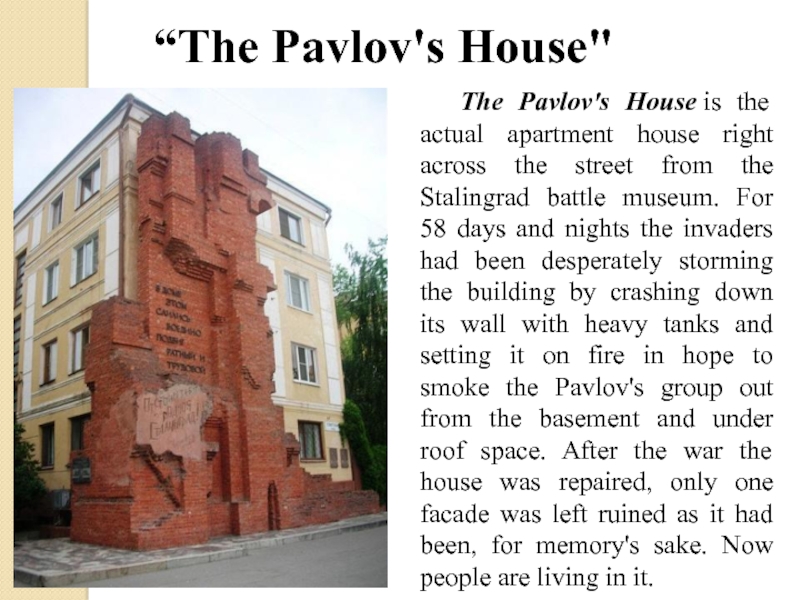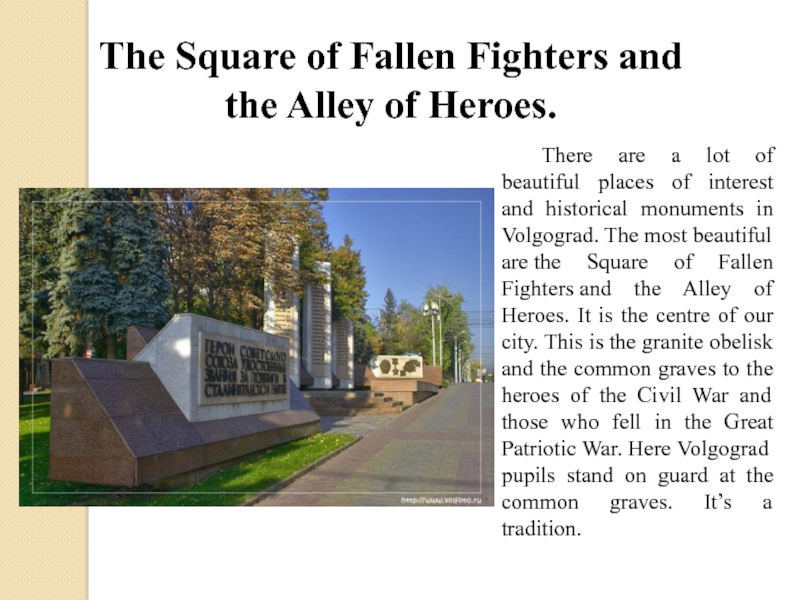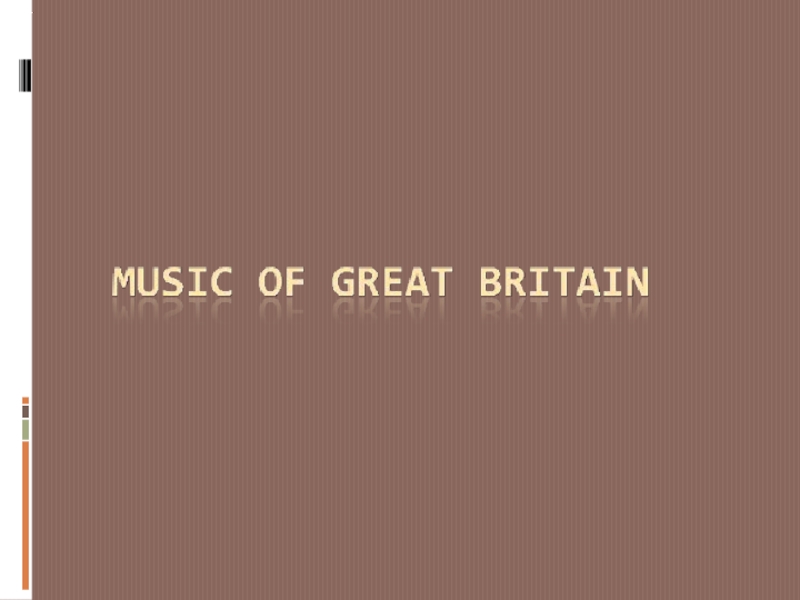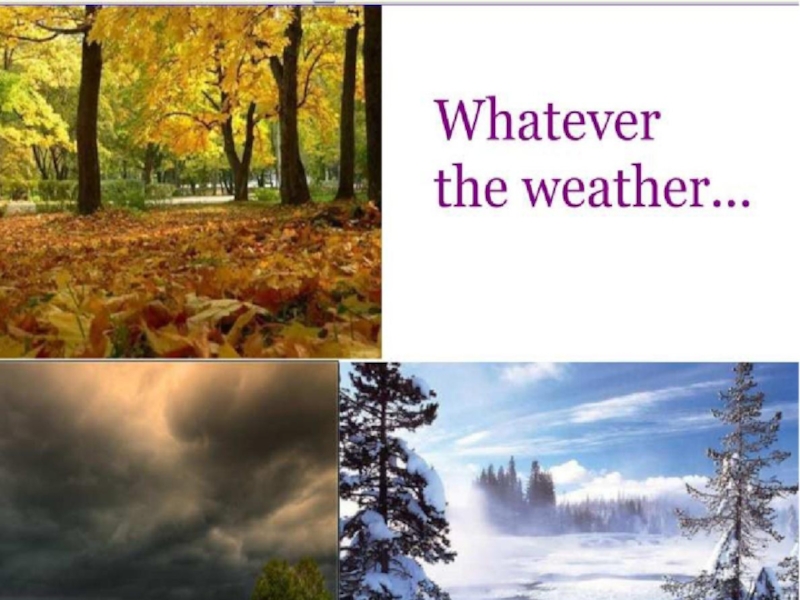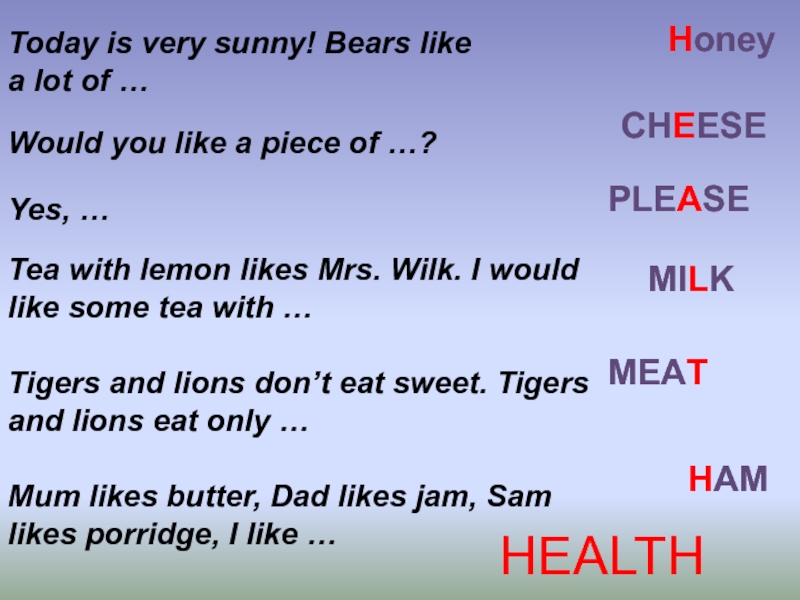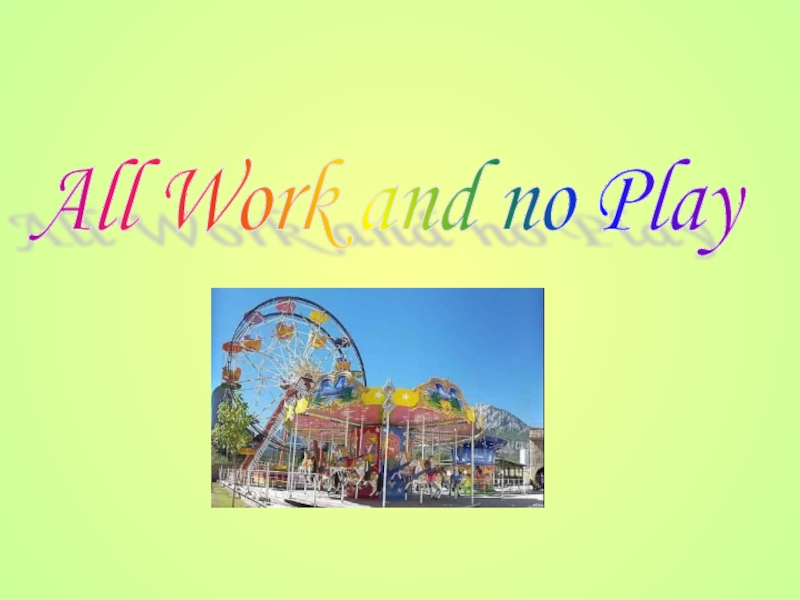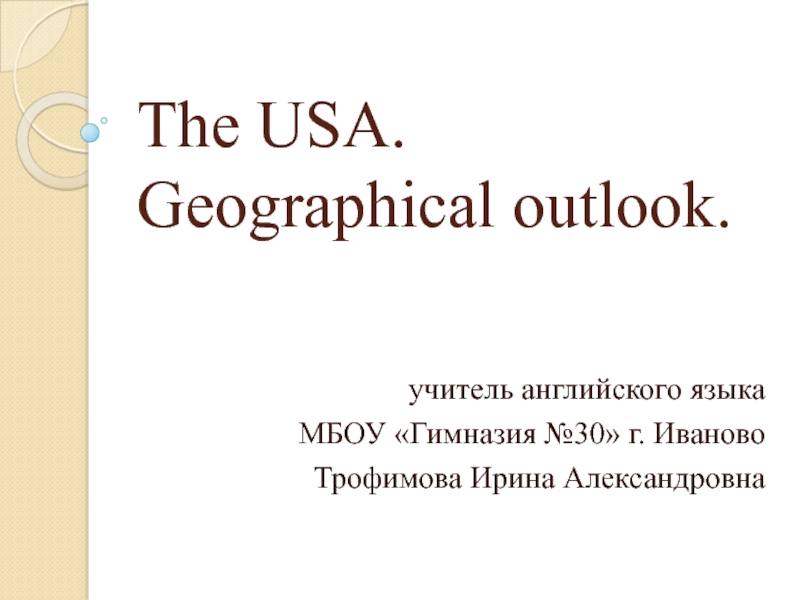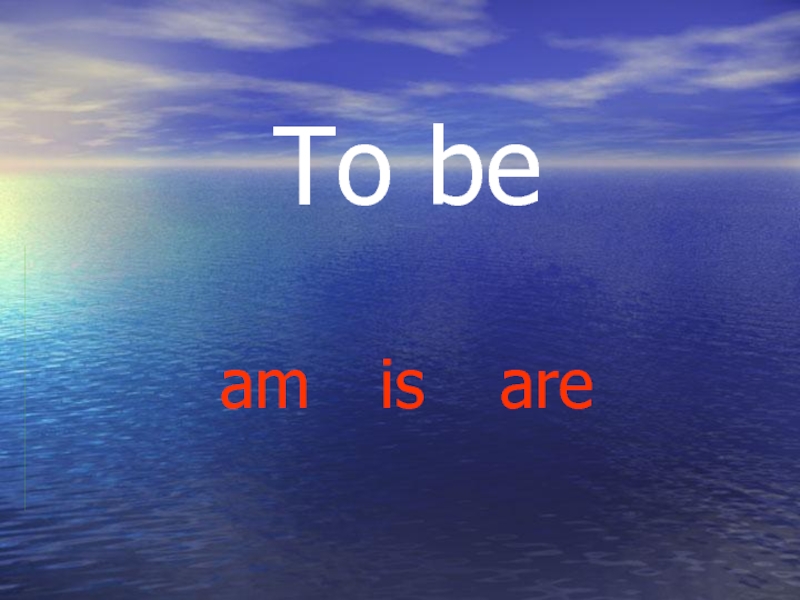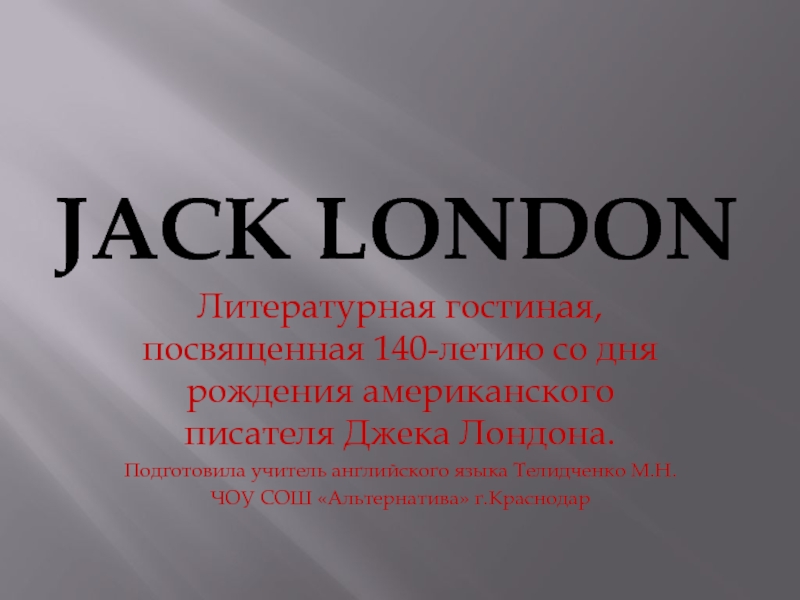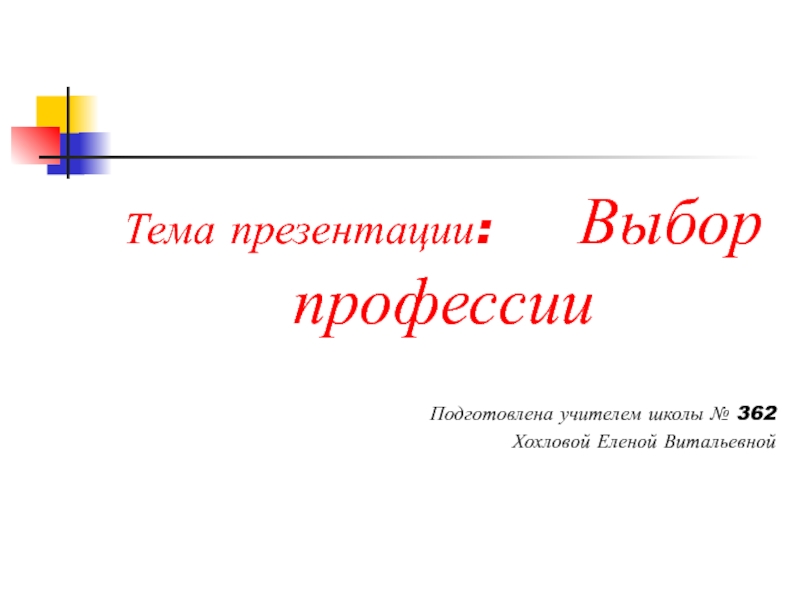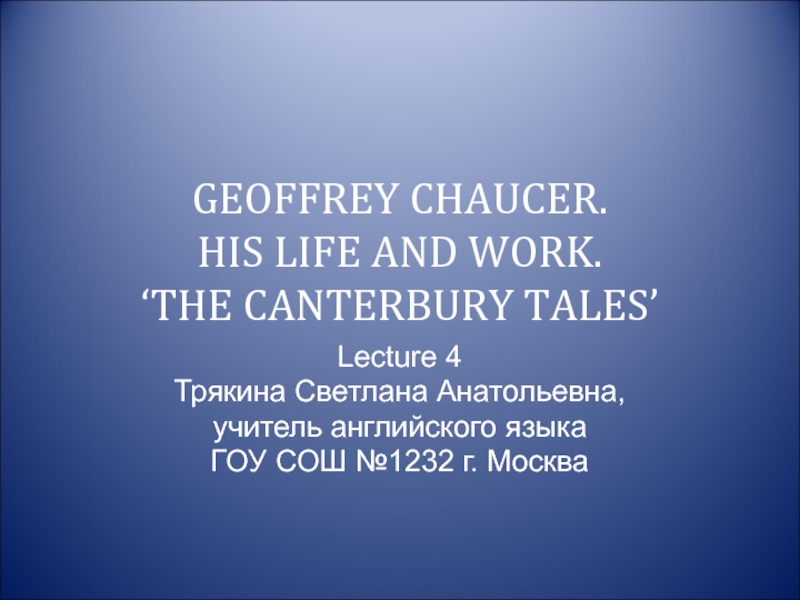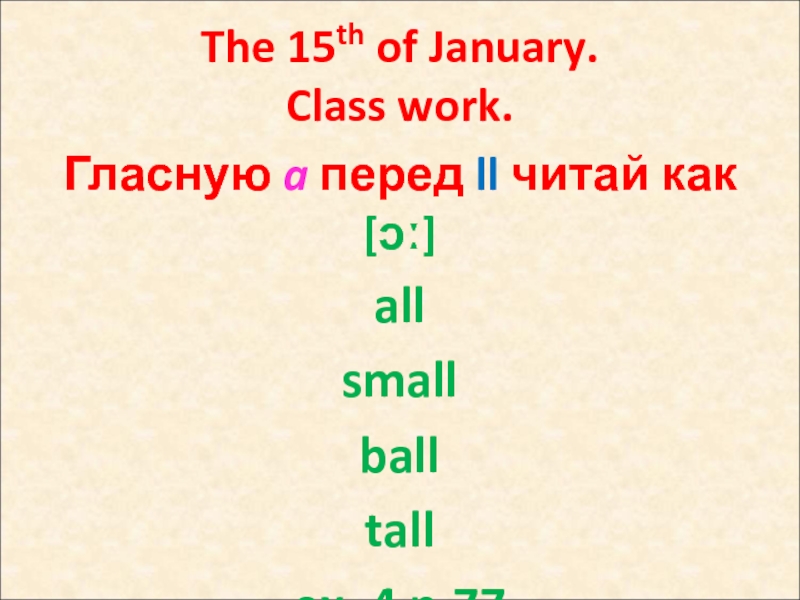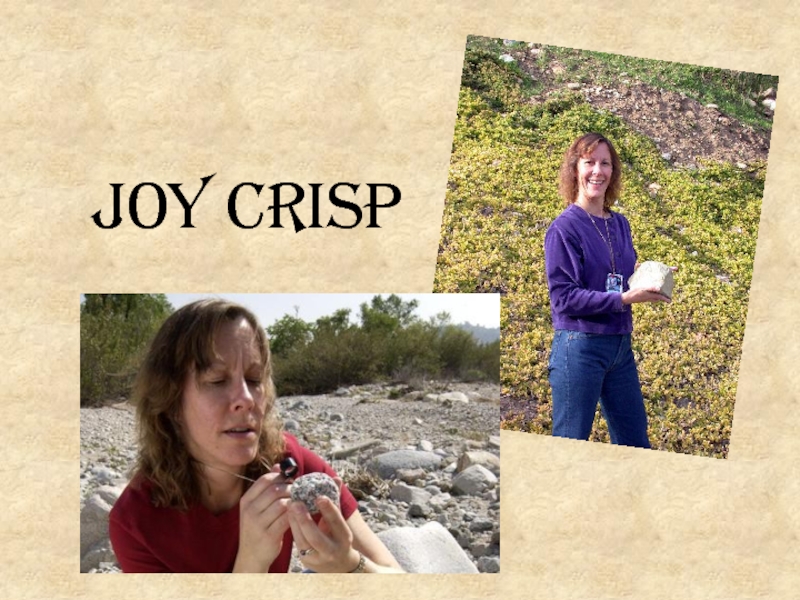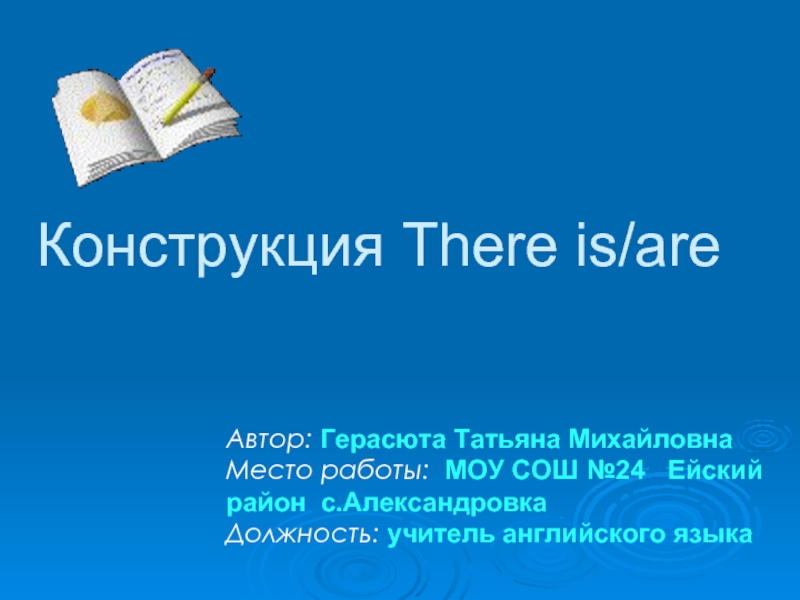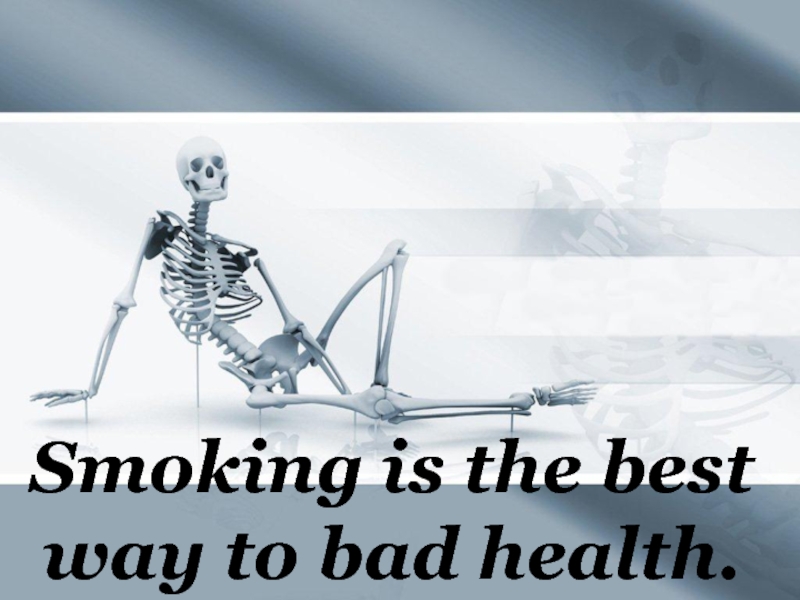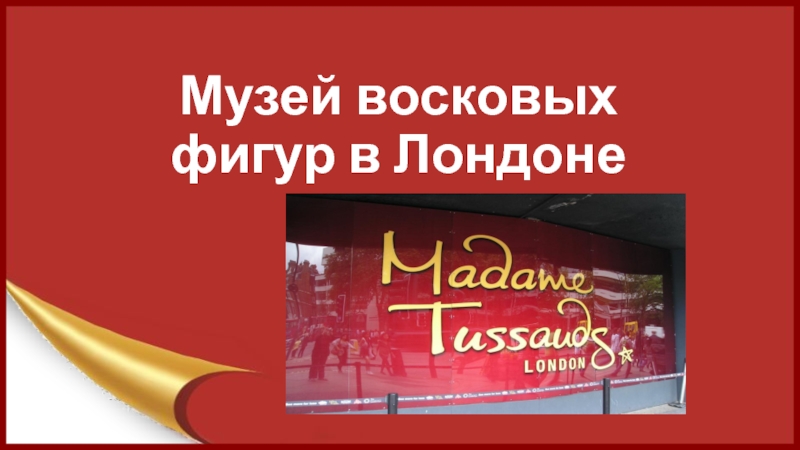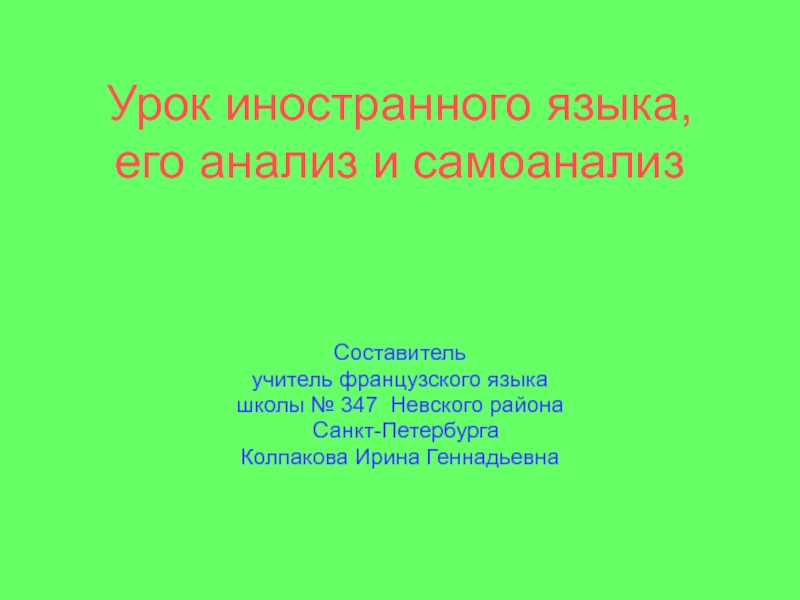Разделы презентаций
- Разное
- Английский язык
- Астрономия
- Алгебра
- Биология
- География
- Геометрия
- Детские презентации
- Информатика
- История
- Литература
- Математика
- Медицина
- Менеджмент
- Музыка
- МХК
- Немецкий язык
- ОБЖ
- Обществознание
- Окружающий мир
- Педагогика
- Русский язык
- Технология
- Физика
- Философия
- Химия
- Шаблоны, картинки для презентаций
- Экология
- Экономика
- Юриспруденция
Презентация к докладу на тему: "Гражданско-патриотическое воспитание студентов на уроках английского языка"
Содержание
- 1. Презентация к докладу на тему: "Гражданско-патриотическое воспитание студентов на уроках английского языка"
- 2. “Как нет человека без самолюбия, - так
- 3. Патриотизм – в переводе с греческого означает любовь
- 4. Принципы гражданско-патриотического воспитания: 1. Ориентация на нравственные отношения в
- 5. Цель гражданско-патриотического воспитания - формирование и
- 6. Задачи гражданско-патриотического воспитания - создание единого пространства
- 7. - формирование здорового образа жизни; Задачи формирования
- 8. Основные принципы- принцип бесконфликтности и посильности;- принцип
- 9. Основные разделы программы: Политическое устройство англоговорящих стран.-
- 10. DON’T POLLUTE THE RIVERS!LET’S SAVE OUR NATURE!
- 11. PEOPLE, STOP YOUR HARM!THINK ABOUT OUR NATURE!THINK ABOUT YOUR CHILDREN1
- 12. Building numerous factories people have started to
- 13. Environmental protection should become of a global
- 14. THE HERO CITIES
- 15. “Let no one forget. Let nothing be forgotten.”
- 16. Moscow Leningrad (Saint- Petersburg) Stalingrad
- 17. MOSCOW
- 18. The capital of the Russian
- 19. The Communists lost power in
- 20. The oldest and busiest sections
- 21. VOLGOGRAD(STALINGRAD)
- 22. Volgograd, formerly Stalingrad, city, capital
- 23. Volgograd was founded in
- 24. During World War II, Stalingrad,
- 25. Слайд 25
- 26. Volgograd was famous in the Second World
- 27. “The Pavlov's House" The Pavlov's House is the
- 28. The Square of Fallen Fighters and the Alley
- 29. Скачать презентанцию
Слайды и текст этой презентации
Слайд 1«Гражданско – патриотическое воспитание студентов
на уроках английского языка»
Булыгина Ж.А.,
государственный промышленно-гуманитарный техникум имени А.В. Яковлева» (ГБПОУ «ЧГПГТ им. А.В. Яковлева»)
Слайд 2“Как нет человека без самолюбия, -
так нет человека
без любви
к Отечеству,
и эта любовь дает воспитанию
верный ключ к сердцу
человека...”К.Д.Ушинский
Слайд 3Патриотизм – в переводе с греческого означает любовь к Родине, преданность
своему Отечеству.
Гражданственность –интегративная характеристика личности человека, понятие, которое характеризует гражданско-патриотическую позицию
человека, его ценностную ориентацию, подразумевающую ответственность за судьбу своей Родины, сопричастность с её судьбой.
Гражданско-патриотическое воспитание – целенаправленная деятельность, призванная формировать у молодежи ценностные ориентации, качества, нормы поведения гражданина и патриота России. Данное воспитание осуществляется на основе освоения общегражданских ценностей.
Основные понятия
Слайд 4Принципы гражданско-патриотического воспитания:
1. Ориентация на нравственные отношения в коллективе, нравственный принцип воспитания:
«улучшить общество, улучшив самих себя».
2. Личностная ориентация нравственного воспитания, направленность его
на формирование сознательной жизненной позиции воспитуемых. 3. Комплексный подход к нравственному воспитанию, включающий как собственно воспитательный процесс, так и процесс самовоспитания личности
4. Культурно-исторический контекст воспитания, формирующий понимание и знание российских традиций и ценностей, роли России в истории и мире.
Слайд 5Цель гражданско-патриотического воспитания
- формирование и развитие личности гражданина-патриота России,
способного соединить патриотические чувства и патриотическое самосознание с идеалом гражданственности, ценностями
социальной солидарности, справедливости, ответственности, готового служить российскому обществу и укреплению его единства, сознающего все значение единства российского общества, важность и ценность общероссийской идентичности.Слайд 6Задачи гражданско-патриотического воспитания
- создание единого пространства гражданско-патриотического воспитания;
- формирование патриотических
чувств и патриотического самосознания (патриотической идентичности);
- усвоение и использование на
практике основ гражданского образования.Слайд 7- формирование здорового образа жизни;
Задачи формирования гражданских ценностей
студентов
на уроках английского языка
- формирование культурно-социальных ценностей;
воспитание любви и
уважения к Отечеству, к малой Родине, семье, природе;
- создание условий для проявления творческих
способностей каждого из обучающихся.
Слайд 8Основные принципы
- принцип бесконфликтности и посильности;
- принцип открытых перспектив;
- принцип
равных условий;
- принцип сотрудничества;
- принцип доверия и взаимоуважения.
Слайд 9Основные разделы программы:
Политическое устройство англоговорящих стран.
- Молодежь в современном
обществе.
- Социальная защита населения.
Свободное времяпрепровождение.
Изобретения, которые
потрясли мир. Какой разный мир!
Слайд 12Building numerous factories people have started to interfere intensively in
nature. Every year world industry pollutes the atmosphere with tons
of dust and other harmful things. As a result many species of animals and plants disappear forever, including fish and birds. Many large cities suffer from factory smog. Their activity pollutes the air, the water, the forests and the land.Слайд 13 Environmental protection should become of a global concern and serious
measures should be taken to create ecological security.
We must save
wild animals. And we must find the right way to save land, people and animals. We must take care of nature, because we are part of it.Слайд 16
Moscow
Leningrad (Saint- Petersburg)
Stalingrad (Volgograd)
Sevastopol
Odessa
Kiev
Brest
Novorossiysk
Kerch
Minsk
Tula
Murmansk
Smolensk
Слайд 18
The capital of the Russian Federation is Moscow. It is
one of the largest cities in the world. More than
8.75 million people live in Moscow. Moscow is the cultural, communications, government, industrial, scientific, and transportation centre of Russia. It lies in western Russia, in the European part of the country. The Moscow River, for which the city was named, flows through the city.Moscow was founded during 12th century. Moscow emerged as the most powerful Russian city in the late 1400 s. The princes of Moscow played a leading role in uniting various Russian lands and in conquering non-Russian peoples and territories. Moscow became the capital of the Russian Empire and was the home of Russia's czars until 1712, when the capital was moved to St. Petersburg.
Moscow again became the Russian capital in 1918, after the Bolsheviks (later called Communists) took control of the country. In 1922, Russia and three other republics united to form the Union of Soviet Socialist Republics. Moscow was chosen as the Soviet capital.
Слайд 19
The Communists lost power in the Soviet Union in August
1991. In December, the Soviet Union was dissolved. Russia and
other former Soviet republics became independent countries. Most of the republics, including Russia, formed the Commonwealth of Independent States. Moscow remained the capital of Russia. The city of Minsk, in Belarus, was named headquarters of the Commonwealth.Moscow is built in the shape of a wheel. This shape can be traced to the city's early history, when rings of fortifications were built to protect it from attack. Today, wide boulevards extend from the city's centre, forming the spokes of the wheel. They cross circular ^boulevards, which make up the inner and outer rims of the wheel.
A major highway circles Moscow. Past the highway lies the Green Belt, a ring of forests and parks covering about 1,800 square kilometres.
Слайд 20
The oldest and busiest sections of Moscow lie near the
Kremlin, a huge walled fortress at the city's historic centre.
Just north and east of the Kremlin is the main business, commercial, and administrative district. Encircling this area and the Kremlin are Moscow's main shopping streets and many cultural buildings. Most of the city's new residential and industrial districts lie in the outermost rings.At the city's heart on the banks of the River Moscow lies the Kremlin, a walled fortress housing all the government buildings. Nearby St. Basil's Cathedral was built in the 16th century to celebrate a military victory; it is now a museum.
Слайд 22
Volgograd, formerly Stalingrad, city, capital of Volgograd Oblast, southwestern Russia,
on the Volga River. Volgograd, an important industrial, commercial, and
transshipment center of Russia, is a railroad hub and a major Volga River port. It is linked to the Don River by the Volga-Don Canal, constructed between 1950 and 1957. A large hydroelectric power dam is just north of the city. Among the main industries in Volgograd are petroleum refining, shipbuilding, and the manufacture of aluminum, chemicals, processed food, farm machinery, iron and steel, and forest products. The University of Volgograd (1980) is located in the city.Слайд 23
Volgograd was founded in 1589 as Tsaritsyn, a fortress
on the southeastern frontier of Russia. It was taken by
cossack rebels twice: in 1670 by Stenka Razin and in 1774 by Yemelyan Pugachov. With the expansion of the Russian Empire in the 19th century, Tsaritsyn became an important port for products shipped down the Volga River. Early in the Russian Revolution, in 1917, the city was taken by the Bolsheviks. During the civil war that followed it was occupied by White Russian troops for three months in 1919. In 1925 the city was renamed Stalingrad, for Joseph Stalin, who had been notable in the defense of the city against the White Russians.Слайд 24
During World War II, Stalingrad, a strategically located industrial center,
was a vital German objective. A large German force mounted
an assault on the city on August 20, 1942, after a period of heavy air raids. A successful Soviet counteroffensive began on November 19, and on February 2, 1943, the Sixth German Army surrendered, thus ending the German advance into the Union of Soviet Socialist Republics (USSR). German casualties alone totaled more than 300,000, and the Soviet city was almost completely destroyed. Reconstruction began immediately after the war. The city was renamed Volgograd in 1961.Слайд 26 Volgograd was famous in the Second World War. There is
a place in Volgograd, which is closely connected with the
events of this War and with the Great Stalingrad Battle – it is the glorified Mamayev Hill with its “memorial complex “To the Heroes of the Stalingrad Battle. Mamayev Hill is the symbol of Volgograd. This place keeps a memory of heroes who died defending our country.Mamayev Hill
